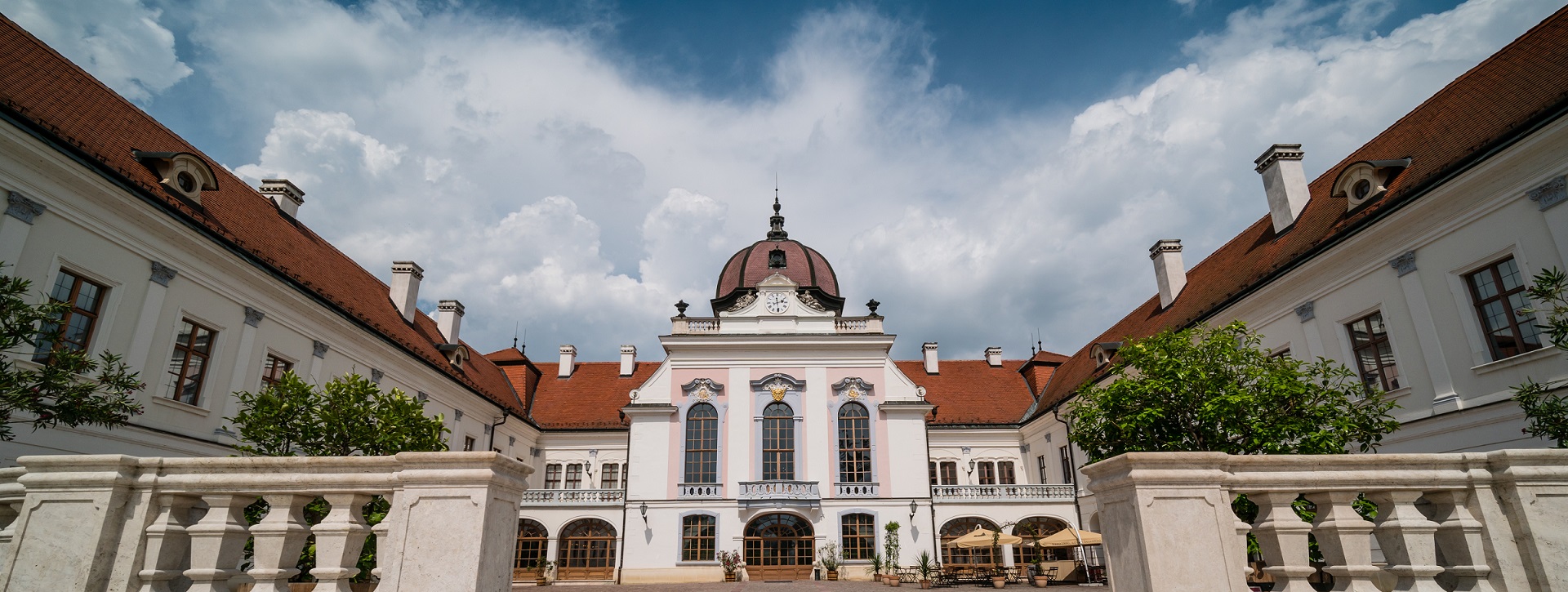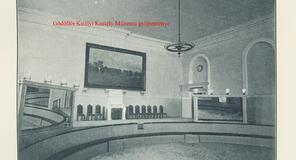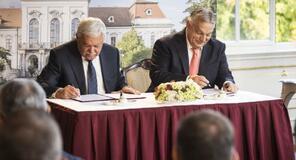
Certain supplementary elements of your choice may be added to events, transporting your guests back into various historical periods of the Palace (Baroque period, royal era).
PROGRAMME RECOMMENDATIONS to supplement events in the Royal Palace of Gödöllő
Your event can be enhanced by various creative ideas and supplementary elements, so that you and your guests enjoy a successful and memorable time. The success of the event is guaranteed by the unique environment, quality cultural elements and an experienced professional team.
Nostalgia trip
From the West Station in Budapest to the Royal Waiting Room in Gödöllő by steam train
Joyride, nostalgia taxi
Carriage ride inside or outside the Palace park
Recommended for welcoming guests:
Guests welcomed by fanfares and a line of hussars with torches
Royal reception
Queen Elisabeth welcomes guests to the Palace
Authentically dressed museum guides show guests around
Photographs in contemporary costume. Nostalgic photographs (in archaic sepia) are developed within 10 minutes in the photographic laboratory
Package offers
BAROQUE THEATRE PERFORMANCES, DANCE PRESENTATIONS, ORCHESTRAS, CONCERTS
Savaria Chamber Opera performances
1. Queen Sissi – a musical play in four parts performed in Hungarian or German:
works by J. Strauss, F. Schubert, J. Haydn, J. Brahms, Ferenc Erkel, with 3 singers, 4 musicians and 2-4 dancers
2. G.B. Pergolesi: La serva padrona (The Servant Mistress)
2 singers, 1 mute player, 4 musicians, approximately 1 hour. In Hungarian (later also in Italian).
An amusing comedy for all occasions (either independently or as a supplementary element to an event, congress, etc.) for all ages.
3. W. A. Mozart: Bastien and Bastienne
3 singers, 5 musicians, approximately 1 hour, German or Hungarian. A jolly play composed by Mozart as a child.
Baroque masterpieces
The Marquise ensemble have been giving their special, unique concerts throughout Europe and Hungary for 7 years now. The musical experience comprising Baroque, Rococo and early Classical works is enriched with authentic clothes, drama and verse recitations. The two singers are Judit Felszeghy (coloratura) and László Blaskovics (countertenor). After more than a hundred successful performances in Hungary, the Marquise ensemble turned towards Europe in February 2008: they gave concerts at the Venice Carnival, and in the Matthias Church in Buda they played Handel’s Messiah with an 80-member boys’ choir from Basel. Their repertoire includes selected masterpieces by Hungarian Baroque composers, as well as works by G.F.Händel, A.Vivaldi, C.Monteverdi, H.Purcell and W.A. Mozart, sometimes with narration in foreign languages.
Company Canario Historic Dance Ensemble
Period music is becoming increasingly popular throughout the world. In earlier times, music, dance and theatre were a part of everyday life. In the over-paced modern world, the tranquillity, elegance and beauty of those times can provide a real diversion. The Company Canario Historic Dance Ensemble was established in 1992 with the aim of familiarising Hungarian people with old dances, which together with the increasingly popular period music provides concert audiences with a wonderful, complex experience. The members of the ensemble come from various Hungarian folk groups and ballet companies. Adapted for dance theatre, the choreography is based on original books describing dances from the European Renaissance and Baroque periods, as well as 19th century ballroom dances. Their historic fashion show is an unusual adventure in clothes, music and dance through the centuries from Roman times up till Art Nouveau.
Some other recommended musicians
Cuento Guitarre Trio
Gödöllő Consort
Grassalkovich String Quartet
TELURES Ensemble
Mária Lévai, harpist
Custos Viol Consort
Gyula Balogh jnr. Gipsy Band
Falconry and archery show
Ancient Hungarian hunting methods are demonstrated in the Palace park. The show includes birds used in falconry, the Hungarian Origins Myth, the history of falconry, a flying demonstration and the traditions of falconry in Gödöllő. This is followed by the development of the bow, famous archers from history, “the Magyars’ arrows” in hunting, and a musketry demonstration. (The archers demonstrate the bows and their use dressed in the costumes and using the equipment of the respective periods). After the presentation, visitors can try out archery and bird flying for themselves.
Equestrian programmes in the Palace Park
Lady riders
Hungarian Dama Horse Club
Hungarian Dama Horse Club shows are elegant and fun to watch. The performance is underscored by classical music appropriate to the event. As a result of special training, the audience will be dazzled by the most unusual elements from dressage and the circus. Beauty and graceful elegance are united in the horse and its lady rider, a combination which has provided a unique experience for thousands over many years. The fragility of the ladies is further emphasised by the retinue of manly and elegant hussars. The costumes faithfully reflect the regal atmosphere of Gödöllő. The ladies’ costumes are authentic reproductions of Queen Elisabeth’s riding dress. The hussars are dressed as would be in the time of the Monarchy.
Pack hunting shows
Pack hunting shows - à la Capári. “I would never have believed that hunting, even at the level of the horse and hound sport, could involve enough excitement. No blood, no game, just a large pack of hounds out of breath, riders in authentic costumes, wonderful horses and endless hillsides of wood and brush. So, pack hunting still exists today. It’s just a bit different, though, more subtle and reserved than the sport pursed by our ancestors in the good old days.”
The beautiful Palace park may be one of the most authentic venues for the Capári Lovasudvar pack hunting shows. It may be supplemented by characters in costume, carriages, or additional feats of riding. A truly dynamic, spectacular show!
Mihály Jászsági Szűcs Band of Hussars
Their aim is to present genuine Hungarian national and military traditions in a spectacular show for the whole of Europe. The persons, associations and professional organisations participating are almost all members of the Hungarian Association for Preserving Hussar and Military Traditions. The 20 year existence of the association and their wide range of experience in arranging national and international events, as well as their team of expert organisers guarantee a high standard of performance.
Mátyus Court Eger
The art of riding - our show is characterised by perfect harmony between horse and rider. The audience can enjoy a series of dazzling items both in the saddle and on the ground, including passage, piaffe, levade, kurbett and kapriol. The show features Lipica, Andalusian and Friesian horses.
GIFT SHOP
There is a selection of books on sale related to Queen Elisabeth, as well as postcards and gifts evoking the Monarchy era. You can choose from our Hungaricum packages and souvenirs, which can be marked with individual emblems for your event.
Additional offers:
- accommodation: we can help you find accommodation (from a guesthouse to a 5-star hotel)
- event decorations, flower arrangements
- personalised menu cards, seating cards, invitations
- animators
- children’s animators, playhouse
- museum workshops


